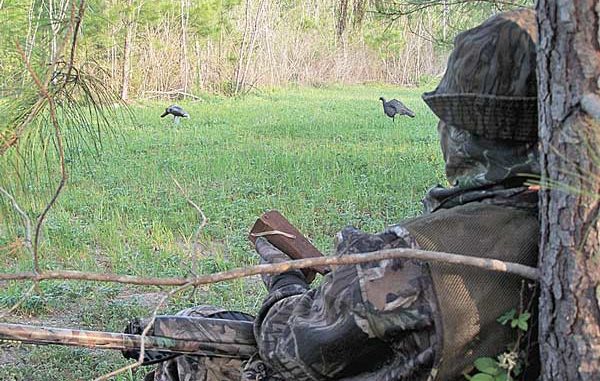
Sumter National Forest is the Upstate’s turkey-hunting mecca. Here’s how one local expert consistently fills his tags.
Each Saturday morning from 6 to 8 a.m., Upstate outdoor enthusiasts within earshot of WRIX-FM in Anderson can enjoy a lively discussions between the host, visiting outdoors experts and callers on the “Southern Woods and Water” radio show.
Chuck Mulkey, a local taxidermist, deer processor and chairman of the National Wild Turkey Federation’s Anderson chapter, is the program’s host. From late March and through the month of April, the topic of discussion is sure to center around Mulkey’s favorite past-time — chasing turkeys.
Mulkey’s high profile in his hometown of Anderson lands him a lot of opportunities to hunt on different tracts of private lands, but he also enjoys working birds in the vast and nearby Sumter National Forest.
If you’ve missed Mulkey’s turkey tips or live outside the broadcast area, he’s happy to share his ideas on what it takes to bag that gobbler on either public or private lands.
PRESEASON SCOUTING
“Turkey season in the Upstate opens April 1, so beginning about the middle of March, I go to locations where I want to scout for turkeys, and I listen,” Mulkey said. “I look for roosting areas and slip in there two or three times a week and listen for birds gobbling.
“The absolute worst thing you can do when scouting is to call. Calling birds off the roost before the season starts will only make them call shy, because if you call that bird and he gobbles in response to that call, he’ll come check that spot out at some point. He either won’t find a hen or you’ll spook him as you leave — either way, he becomes a call-shy bird that probably won’t be killed that season.”
Mulkey looks for signs of scratching; even if he doesn’t hear gobbling, scratching assures him that birds are in the area and can even point him in the direction the birds were travelling so he can refine his search. Birds scratch as they feed; to determine where they’re going, look for the arrow-like marks they leave behind.
“One thing that’s equally as good as finding a hot bird on the roost is finding his strutting zone,” Mulkey said. “If you can find a gobbler’s strutting zone, that area that he comes to every day to visually look for hens, you’ll kill that bird before the season is over.”
Mulkey is a big believer in carrying a good set of binoculars whenever he’s in the woods. If public roads dissect the area he intends to hunt, he’ll ride the roads, using his binoculars to scan fields where turkeys congregate from mid-morning through noon. He makes note of where he finds birds, knowing they’re likely to return there once the season opens, especially on rainy days when they will head for open areas for security.
OPENING DAY
On Opening Day, Mulkey will slip into an area where he’s been able to locate roosting birds, only this time he’s armed with a shotgun and a collection of calls. He’s also going to close the distance between himself and the roosted bird.
“I’m going to get in there early and try to get as close as I can get without bumping him,” he said. “I’ve usually got a pretty good idea where he’s roosting because I’ve been in there every morning the week before — and I might even pin down which tree he likes by looking for droppings.
“When I hear him getting ready to fly down, I’ll hit him with a series of small, short, soft calls. Ideally, he’ll fly down and come straight to me, but it doesn’t always go that way.”
Mulkey said that if a bird that’s gobbling on the roost heads in the direction of live hens when he flies down, he’ll likely come back to that area sometime after 10:30, when he’s done with the morning shift.
“He may come in silent or he may gobble a couple of times, but if you’re convinced you got his attention on the roost and nothing spooks him between those times, he’ll be back.”
AS TIME GOES BY
Later in the season, Mulkey will continue to try and work birds on the roost. Eventually, he’ll get to a time and place when birds don’t want to gobble; that’s when he goes to his backup plan.
“You can’t have enough places to hunt,” he said. “Some hunters will stay and wait out a bird that might be in there, or they may cover a lot of ground walking and calling. But I want to hear that bird gobble before I commit to go deeper in there. Otherwise, I’m going to the truck and try to get to another piece of property fast. Maybe I can hear something gobbling or see one in a field or oak bottom that I can get to work.”
If he still can’t locate a gobbling bird at his second or third spot, he’ll move to the edge of a field or large oak grove where he’s seen birds and begin glassing for them. He’ll work fields, alternately glassing and occasionally calling to see if he can get a bird to respond. By lunchtime, he’s ready to take a break for a couple of hours and get ready for his afternoon hunt.
YOUR LOCAL CALLING PLAN
Mulkey carries everything from mouth calls to box calls to slate calls in his hunting vest, but he said that most hunters call too much and too often. For him, less is more, and he thinks hunters need to learn when to call and when not to.
“First thing in the morning, when I have a bird on the roost and I hear him stirring, getting ready to fly down, I’ll use a couple of small tree yelps with a box or slate call,” he said. “When he hits the ground and goes silent — as seems to occur more and more these days — I’ll hit it a little harder, trying to get him to come my way.
“Later in the day, I still rely mostly on softer calling (rather) than the long, hard, tournament-style cuts and yelps you hear at the boat shows and outdoor seminars. I’d rather rely on my binoculars or scouting to locate a bird than a call. I want to know he’s there before I call to him.”
Mulkey admits that he’ll sometimes use a “lost call” — a loud, 15-second series of yelps — when he goes back into the woods around 2 p.m. for his afternoon hunt. He also likes louder calls when trying to call a gobbler across a field.
DECOYS, COYOTES, AND HOGS
For Mulkey, decoys are a 50/50 proposition. He’s seen decoys help in some situations, but he also believes a decoy will make a gobbler hang up.
“The normal routine is for the hen to go to the gobbler, and I’ve seen gobblers strut a long way off, expecting that hen to come to him,” he said.
He’s not a big fan of gobbler decoys; hen decoys or a hen-and-jake combination works best for Mulkey. He likes the newer, more realistic decoys than the older, stiffer models that don’t provide much movement. Another downside is that turkeys are not the only animals attracted to decoys.
“Our coyote population in this area has exploded,” he said. “I’ve had several hunters come into my shop and tell stories of coyotes coming in to stalk the hunter — especially if there was a decoy visible from a long way off.”
Mulkey believes the lack of gobbling that many hunters complain about is due to the expansion of the coyote population. Birds seem to do all their locating and communicating from the safety of trees and maintain “radio silence” on the ground to keep from being located by predators.
His other beef is with wild pork.
“Along with the coyote population increase is the number of wild hogs,” he said. “The hogs are generally too slow to eat a grown bird, but I’ve seen them root up nesting sites and eat every egg in the area.”
Mulkey’s observations are consistent with those of many upstate hunters, but like many wildlife populations, turkey recruitment can be cyclical, as explained by Charles Ruth, the turkey-project leader for the S.C. Department of Natural Resources.
“Although turkey numbers across much of the state, including Game Zones 1 & 2, are down due to poor reproduction the last few years, there are still good numbers of birds,” Ruth said. “Harvest figures have been declining, and I expect the harvest to be down a little again this year, simply based on poor reproduction. This is not a gloom and doom situation — it is relative. We are not carrying as many birds in many areas compared to 10 years ago, but 10 years ago there were an awful lot of turkeys. Since turkeys have high reproductive potential, a couple of years of good reproduction will likely get things back on track.”

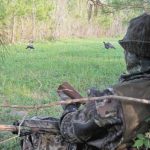
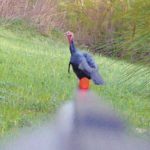
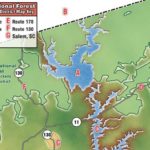
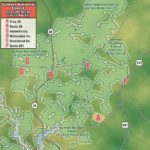
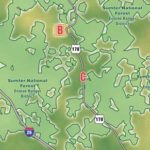
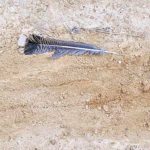
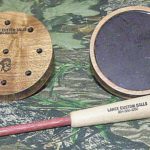



Be the first to comment